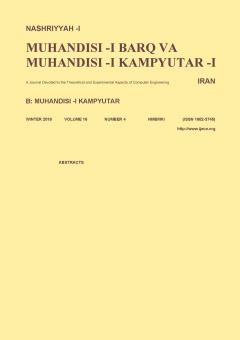-
-
List of Articles
-
Open Access Article
1 - A Method to Get WSN Nodes Data by Web Clients through IoT Gateway Based on CoAP Protocol
M. R. Nikseresht H. Haj Seyyed Javadi Mahdi Mollamotalebi -
Open Access Article
2 - Sustainable Tree-Based Scheduling in Solar Powered Wireless Mesh Networks
H. Barghi S. V. Azhari -
Open Access Article
3 - A Pattern-Matching Method for Estimating WCET of Multi-Path Monotonic Loops
Mehdi Sakhaei-nia S. parsa -
Open Access Article
4 - Incremental Opinion Mining Using Active Learning over a Stream of Documents
F. Noorbehbahani -
Open Access Article
5 - Reduce Dimensions of CDF Steganalysis Approach Using a Graph Theory Based Feature Selection Method
S. Azadifar S. H. Khasteh M. H. Edrisi -
Open Access Article
6 - Enhancing Speed, Area and Power Consumption of Carry Select Adders Using a New Grouping Structure
A. Mohammad Nezhad M. Taghizadeh Firoozjaee -
Open Access Article
7 - An Improvement in Microblog Hashtag Recommendation Based on Topic Vector
Mir Saman Tajbakhsh J. Bagherzadeh -
Open Access Article
8 - Energy-Aware Scheduling for Real-Time Unicore Mixed-Criticality Systems
S. H. Sadeghzadeh yasser sedaghat
-
The rights to this website are owned by the Raimag Press Management System.
Copyright © 2017-2026







